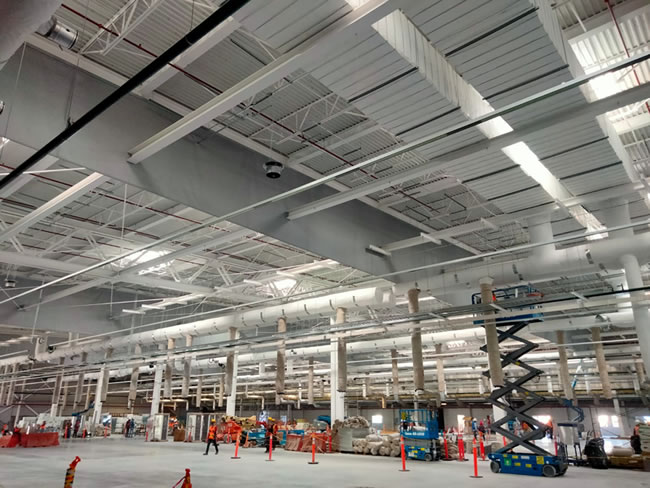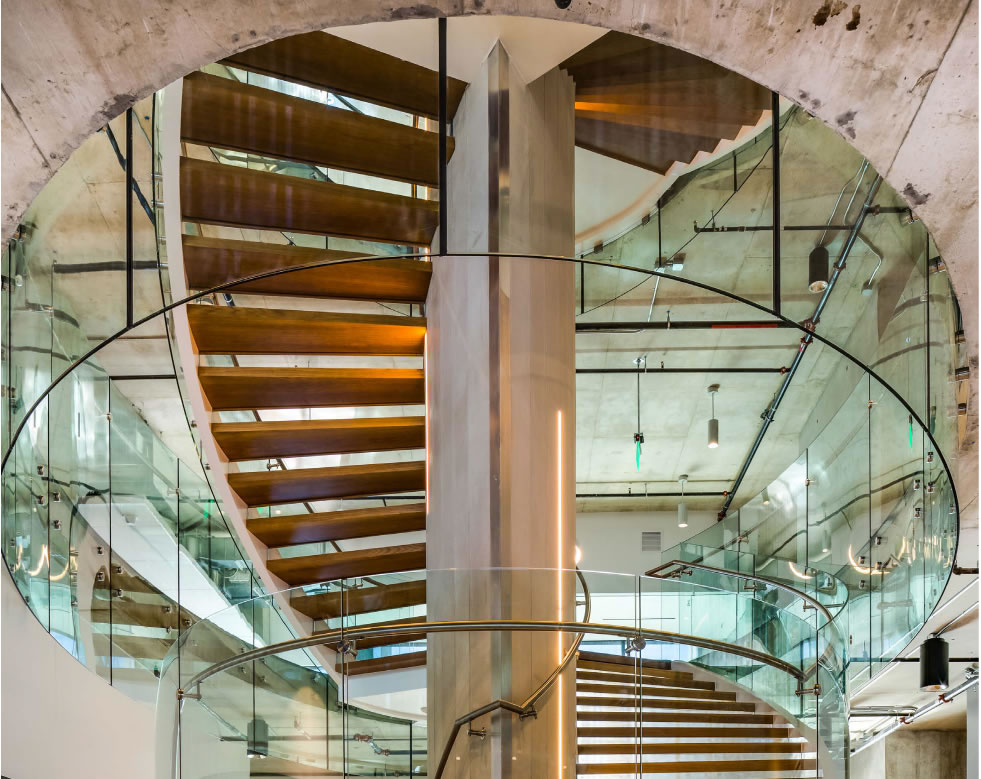Types of Draft Curtains
Draft curtains are commonly used in warehouses, aircraft hangars, and large industrial plants to control and slow down the spread of smoke that rises to the ceiling during a fire. Draft curtains can be manufactured of several materials, including flame-retardant fiberglass, glass smoke baffles, or sheet metal panels.
A Metal Draft Curtain consists of angle framing hanging from the roof frame. The metal sheets are fastened to the angle frame. The sheets hang perpendicular to the roof and are usually between 4 feet and 6 feet long.
The Fabric Draft Curtain has several overlapping curtains attached to provide a continuous run. They are connected together and to the building through clamps and angle pieces. The fire curtain cloth is made of fire-resistant fiberglass woven filament. The cloth’s bottom is weighted, ensuring that the fixed curtain remains taut and reduces the amount of deflection through air currents.

Glass Smoke Baffles are noncombustible glass panels that hang from the ceiling and work as smoke barriers between slab openings, level changes, or divisions to limit the spread of smoke.

Which type of draft curtain to use and when depends on the building type, project size, and budget.
Metal sheet draft curtains can be less expensive than fabric draft curtains and smoke baffles. They are mostly used in warehouses and hangars. They are slower to install than designed fabric draft curtain systems, so can become more expensive when installed in projects larger than 1000LF. If your project is small and can handle the metal panels’ aesthetics and size restrictions, they are the best and cheapest solution.
Glass smoke baffles are mostly installed around stairways in commercial buildings to be used for Exit Access in the event of an evacuation. These systems delay smoke from migrating vertically via the structure’s stairs.
However, Fabric draft curtains are the most common option since they can be fixed or automatically deployable and can adapt to a building in various ways that less flexible materials cannot. If your project can’t handle the aesthetics of glass baffles, the deployable draft curtains are the best option since they can be totally hidden until triggered by the fire alarm system.
Flexible fixed fabric curtains are lightweight compared to alternative materials such as steel sheeting. They are highly versatile since they come in custom widths with several drop lengths to accommodate different ceiling heights.
Still not sure which type of draft to use? The Fire Curtain Technologies team is ready to help you find the right option for your next project. We provide design and code compliance support free of charge.

